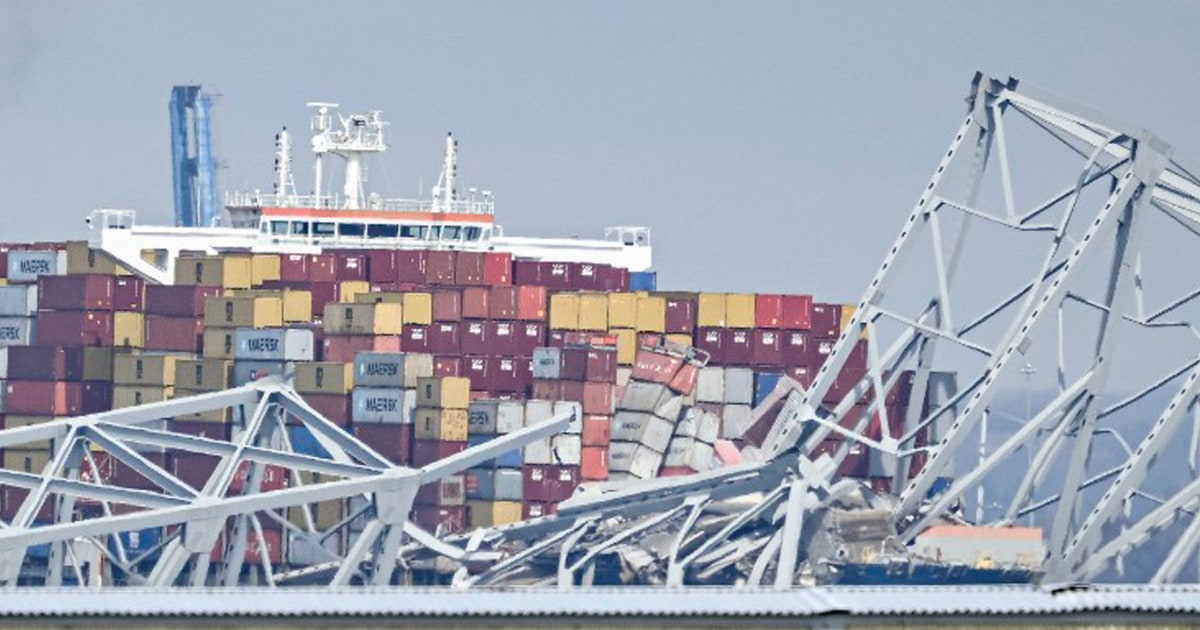By Kalhan Rosenblatt -
NBC News
After a ship carrying containers collided with an important bridge in Maryland and caused it to collapse this Tuesday morning, wild conspiracy theories about the causes of the event have circulated on the social network X.
The ship crashed into one of the supports of the Francis Scott Key Bridge, located southeast of the Baltimore metropolitan area.
After the event, Wes Moore, governor of Maryland, declared a state of emergency and stated that the tragedy that ended with the collapse of the bridge was probably the result of an accident and not a terrorist act.
Moore told reporters that the crew of the container ship Dali, which crashed into the Francis Scott Key Bridge this morning, had notified authorities that they had lost power.
The Francis Scott Key Bridge on the Patapsco River in Baltimore, Maryland. Bloomberg/Bloomberg via Getty Images
As rescue teams continue their search efforts after the disaster, some online conspiracy theorists have attempted to uncover a non-existent plot to explain the collision.
Major news events, such as the pandemic, natural disasters and mass shootings, now systematically serve as justification for marginal figures, many of them on the far right, to amplify their worldviews, which are often based on
dark cabals or major threats. invisible
.
These figures, previously relegated to certain corners of the internet, have flourished on social network X since Elon Musk acquired the platform and eliminated many of the rules that previously attempted to limit the spread of false claims.
Musk has received criticism in the past for serving as a sounding board for conspiracy theories, and reestablishing the accounts of well-known conspiracy theorists such as Alex Jones.
A spokesperson for X did not immediately respond to a request for comment.
The bridge in Baltimore collapsed after being hit by a cargo ship. ROBERTO SCHMIDT / AFP via Getty Images
Some claimed this Tuesday that the ship had suffered “cyber attacks” or that the closures imposed by the COVID-19 pandemic had been to blame for the disaster.
There have been no reports to suggest that
any of these conspiracies are even remotely true
.
In response to some of the messages, social network X included a “context added by readers” note in which the facts were verified.
But it is not just the so-called keyboard warriors who publish these theories.
Several conspiracies were spread by public officials on television and by people with large numbers of followers on social media.
On Fox Business, host Maria Bartiromo falsely suggested that the “wide open border” could have something to do with the collision, a clip of which circulated on X. Authorities have not established any link to the immigration issue. .
A Fox spokesperson did not immediately respond to a request for comment.
Controversial
influencer
Andrew Tate shared a conspiracy that falsely suggested that the ship had suffered a “cyber attack,” and alluded to the fact that the video of the collision shows that the ship's lights appear to go out just before impact.
In the video leading up to and during the incident, around 1:24 a.m. ET, the ship's lights go out for a minute but then flash and come back on.
About 10 seconds later, smoke is seen coming from the ship's chimney.
At 1:26 am, the ship appears to turn and moments later it loses its lights again, which come back on half a minute later.
A spokesperson for Tate did not immediately respond to a request for comment.
Alex Jones responded to Tate, writing in a message posted on X: “It seems deliberate to me.”
The freighter became stuck under the Francis Scott Key Bridge after hitting it.Associated Press
Michael Flynn, who was former President Donald Trump's national security adviser, appeared to suggest it was no accident in a post on social media site X.
A spokesman for Flynn declined to comment.
Flynn's account was
removed from the social network
.
He was reinstated on January 6, 2023, and posted a message “to personally thank” Musk for allowing him to return.
Another baseless claim that circulated on social network X this Tuesday was made by Matt Schlapp, president of the American Conservative Union.
In an excerpt from his interview with Newsmax, Schlapp suggested that the structure and transportation services of the Francis Scott Key Bridge were weakened by closures during the COVID-19 pandemic.
He later suggested that drugs could be behind the collision.
Shipping firm Maersk confirmed in a statement that the ship, called Dali,
operated and managed by a company called Synergy Group
, had been chartered to transport its clients' cargo.
The company said that
the 22 crew members who were on the ship at the time of impact were safe
and that there were no injuries or hydrocarbon contamination as a result of the accident.
The bridge, which is about a mile long and crosses Interstate 65 over the Patapsco River, was “in perfect condition,” Moore explained.

